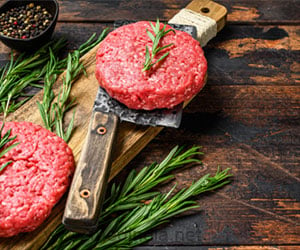- The Food and Drug Administration has for the first time cleared a lab-grown meat product developed by a California start-up as safe for human consumption
- This marks a key milestone for cell-cultivated meats to eventually become available in US supermarkets //
Singapore is the first and only nation to approve sales of lab-grown meat, a product made by Eat Just, which happened two years ago.
Currently, the hurdle in this field is finessing the technology and making it affordable so that this cell-based meat can be turned into a mass-market product. While Upside Food’s chicken has been cleared for human consumption, it has not yet received approval for sale in the country. The product still needs to meet other requirements from the FDA and the US department of agriculture before it can enter the market.
“This is a critical milestone toward the future of food,” Bruce Friedrich, president of the Good Food Institute, a nonprofit think tank focused on expanding plant-based and cultivated meat, said in a statement Wednesday. “Cultivated meat will soon be available to consumers in the US who desire their favorite foods made more sustainably, with production requiring a fraction of the land and water of conventional meat when produced at scale.”
The livestock industry has come under increased environmental scrutiny since cattle are a big source of methane, an especially potent greenhouse gas. The food system drew more attention at the United Nations climate change conference, under way in Egypt, than in previous years, as per a report by the United Nations environmental program.
Cultivated meat is often grown in a vat by copying stem cells extracted from a live animal or from the ovaries of a newly slaughtered animal. The vat is also filled with serum containing amino acids, sugars, and other nutrients needed for cells to grow.
Plant-Based Meat Substitutes in the Flexitarian Age: An Audit of Products on Supermarket Shelves
Go to source).
Artificial meat can provide us with the same nutritional value while also combating the environmental issues that cattle are causing all over the world.
Reference:
- Plant-Based Meat Substitutes in the Flexitarian Age: An Audit of Products on Supermarket Shelves - (https://pubmed.ncbi.nlm.nih.gov/31671655/)
Source-Medindia
















